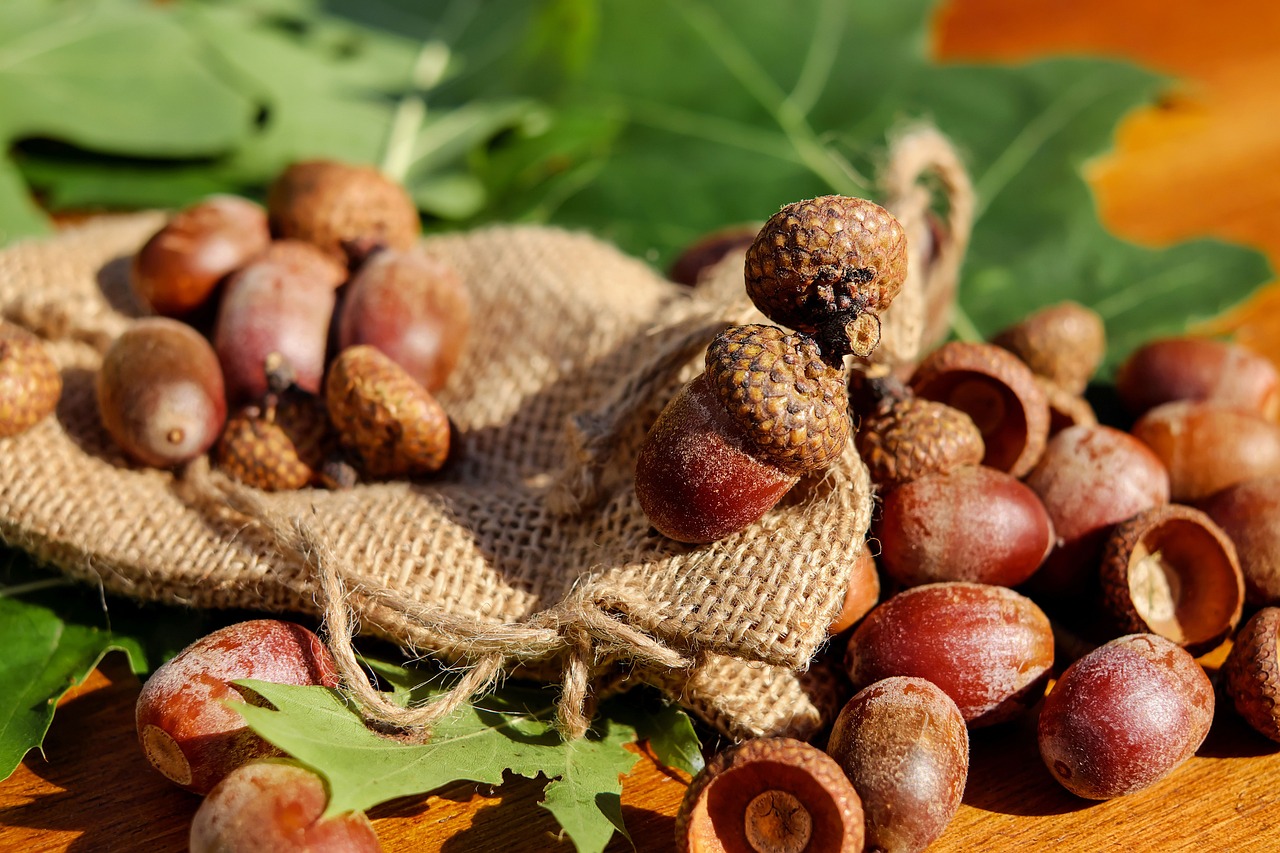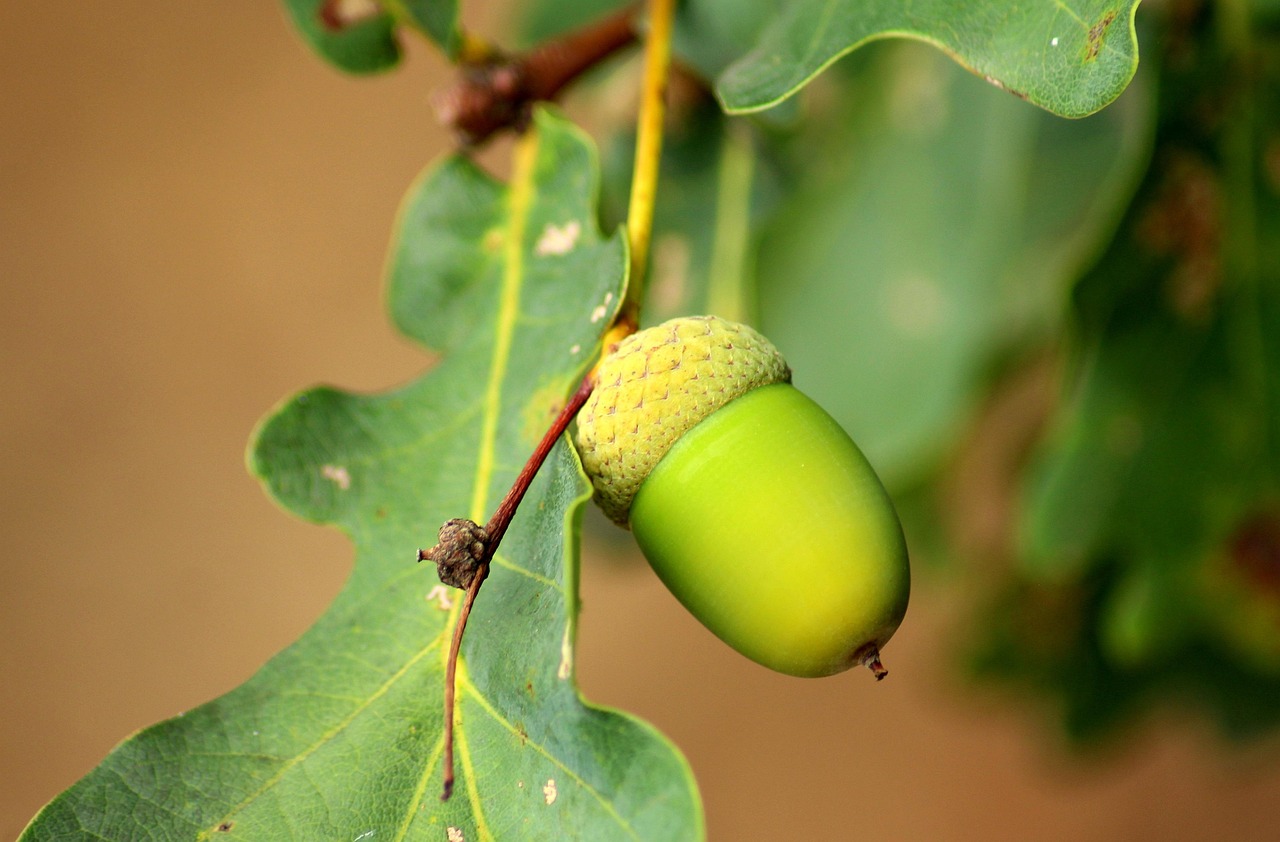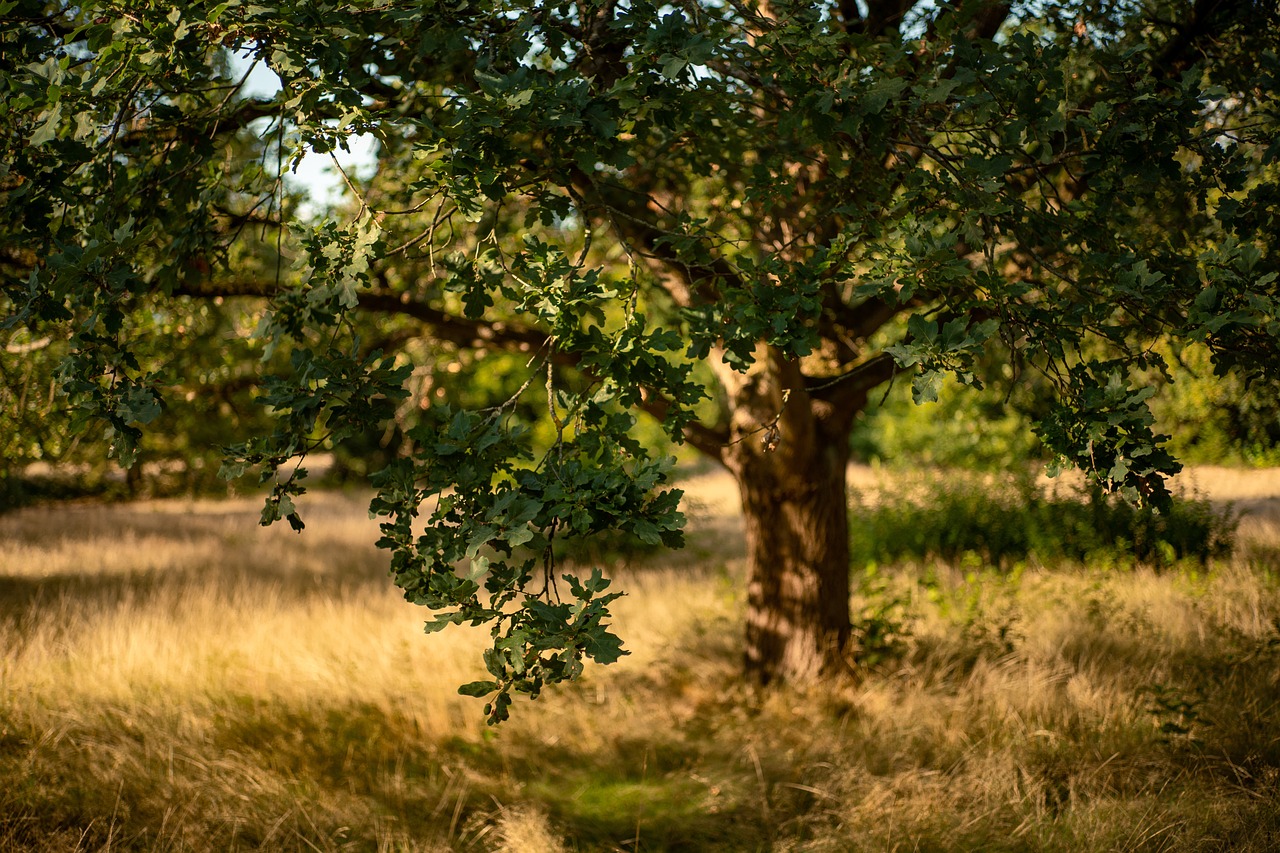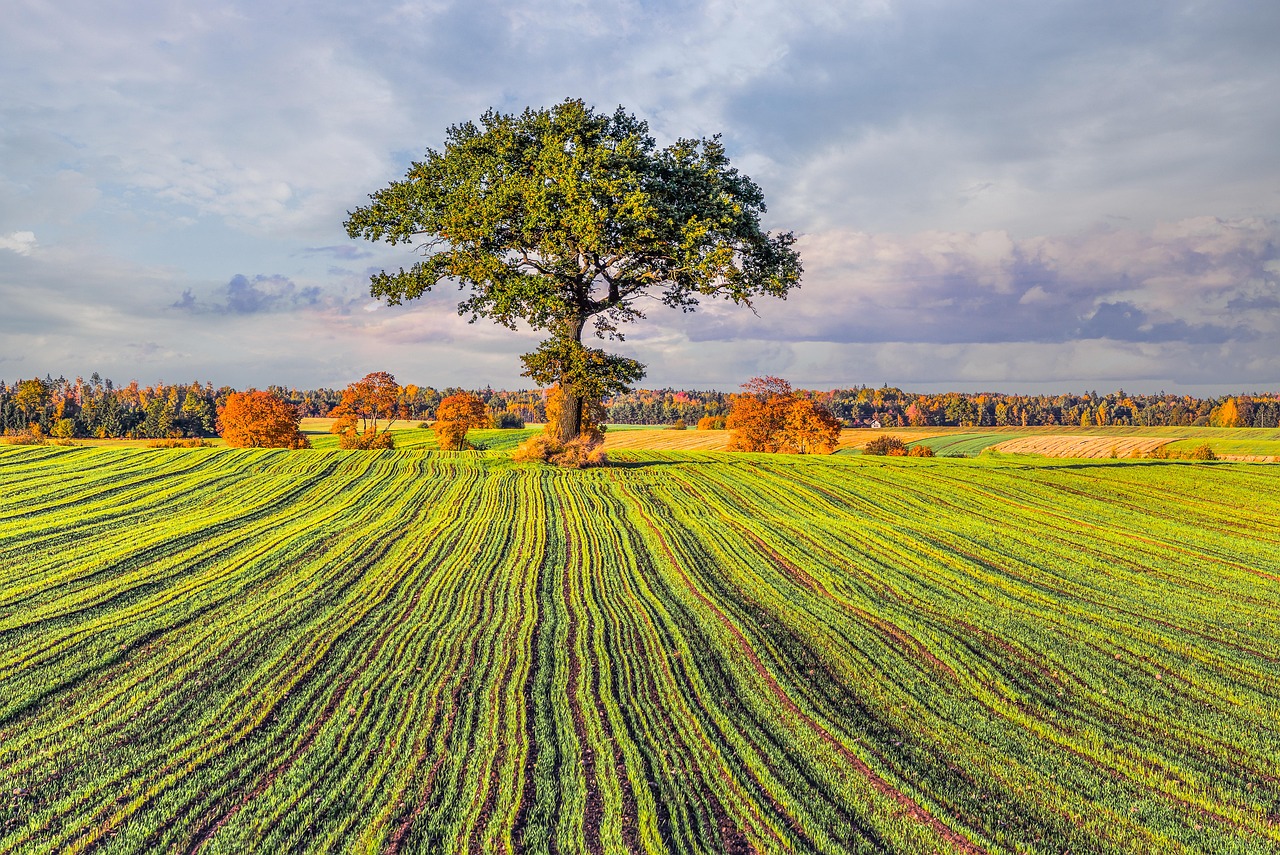Oak trees have held significant meaning throughout history, symbolizing strength, endurance, and wisdom across various cultures. They are often associated with longevity and stability, making them a powerful emblem in mythology and folklore.
The Historical Significance of Oak Trees
From ancient times to the modern era, oak trees have played an essential role in human life. Their robust nature and impressive height made them a natural choice for construction, fuel, and even food sources. The hardwood is highly valued for its durability, which has contributed to its historical importance.

In many cultures, oak trees are revered not just for their practical uses but also for their spiritual significance. The Greeks dedicated the oak to Zeus, the king of the gods, believing that the tree was a symbol of divine strength. Similarly, in Celtic tradition, the oak was considered sacred and was often associated with wisdom and protection.
The symbolism of oak trees extends beyond mythology and spirituality. They have been used as national symbols in numerous countries. For instance, the oak is the national tree of England and has been emblematic of British history for centuries. It represents resilience, standing strong against storms and time.
Symbolism Across Cultures
The oak tree’s significance varies across different cultures, each attributing unique meanings to this majestic tree. Here are some notable examples:

- Ancient Greece: The oak was sacred to Zeus and associated with prophecy.
- Celtic Traditions: The druids held oaks as sacred, seeing them as a source of wisdom.
- Native American Cultures: Oaks provided food and materials, symbolizing sustenance and strength.
- English Heritage: The oak tree is a symbol of the British monarchy and national identity.
The Use of Oak in Historical Context
Throughout history, oak trees have served practical purposes that have influenced societies. Their strong wood has been used for shipbuilding, furniture making, and even in the construction of important buildings. The following table highlights some significant uses of oak wood throughout history:
| Use | Description | Historical Period |
|---|---|---|
| Shipbuilding | Oak wood was used to build sturdy ships, especially during the Age of Sail. | 15th – 19th Century |
| Furniture | Durable oak furniture became a staple in homes across Europe. | Middle Ages – Present |
| Construction | Buildings were often constructed using oak beams for their strength. | Various periods in history |
| Food Source | Acorns from oak trees have been utilized as food by various communities. | Prehistoric Times – Present |
The oak tree’s longevity allows it to become a witness to history. Many ancient oaks still stand today, having survived wars, natural disasters, and changes in society. This endurance adds to their status as symbols of strength and resilience.
Environmental Role of Oak Trees
Beyond their cultural and historical significance, oak trees play an essential role in the ecosystem. They provide habitat for various wildlife species and contribute to biodiversity. Acorns serve as a food source for birds and mammals, while the tree itself offers shelter.

Furthermore, oaks contribute to soil health through their extensive root systems. They help prevent erosion and maintain moisture levels in the ground. Their leaves and fallen acorns enrich the soil as they decompose, supporting a diverse range of plant life.
The importance of oak trees in history is multifaceted. They have been cherished for their strength, valued for their practical uses, and revered for their spiritual symbolism. Understanding their significance enriches our appreciation for these magnificent trees and their role in shaping human history.
Oak Trees in Literature and Folklore
Throughout history, oak trees have inspired countless works of literature and folklore. Their majestic presence and deep-rooted symbolism have made them prominent figures in stories, fables, and myths. Oak trees often signify strength and longevity, serving as metaphors for resilience in the face of adversity.
Many authors have used oak trees to convey themes of wisdom and endurance. For instance, in Aesop’s fable “The Oak and the Reed,” the contrasting characteristics of the oak and the reed illustrate the importance of adaptability. The oak, while strong, eventually succumbs to a storm, whereas the reed bends and survives. This story reflects the enduring qualities attributed to oak trees.

Folklore Surrounding Oak Trees
In various cultures, oak trees have been woven into folklore, often carrying mystical associations. Here are some notable examples:
- Celtic Mythology: Oak trees were believed to be portals to the Otherworld. The Celts saw them as sacred trees that connected the earth with the divine.
- Germanic Traditions: In Norse mythology, the oak tree was associated with Thor, the god of thunder, symbolizing protection and strength.
- Native American Legends: Different tribes have stories that celebrate the oak as a provider of sustenance and a symbol of community strength.
- Shakespearean References: Oak trees frequently appear in Shakespeare’s works, often representing stability and moral integrity.
Oak Trees in Art and Architecture
The aesthetic appeal of oak trees has also influenced art and architecture throughout history. Their grandeur has inspired artists and architects, leading to their incorporation into various artistic expressions.
Artistic Representations
Artists have depicted oak trees in different styles and mediums. Their intricate branches and impressive stature make them a popular subject in landscape paintings. Some famous artists known for their oak tree depictions include:
- John Constable: An English painter famous for his landscapes featuring oaks.
- Vincent van Gogh: Captured the essence of oak trees in his vivid paintings.
- Gustave Courbet: Known for his realistic portrayal of nature, including oak trees.
Architectural Use of Oak
In architecture, oak wood has been favored for its strength and durability. It has been used in the construction of significant buildings throughout history. Notable examples include:
| Building | Location | Year Completed |
|---|---|---|
| Westminster Hall | London, England | 1097 |
| The Globe Theatre | London, England | 1599 |
| The Old Ship Hotel | Brighton, England | 1559 |
| The Palace of Versailles | Versailles, France | 1682 |
The use of oak in these significant structures highlights its value and reliability. As a material, it has stood the test of time, much like the trees themselves.
The Ecological Benefits of Oak Trees
The ecological contributions of oak trees extend far beyond their physical presence. They create habitats for various species and play a vital role in maintaining healthy ecosystems.
Biodiversity Support
Oak trees are known to support a wide range of wildlife. They provide food and shelter for numerous species, helping to maintain biodiversity. Some key aspects include:
- Habitat for Wildlife: Many birds, mammals, insects, and fungi thrive in oak ecosystems.
- Food Sources: Acorns are a crucial food source for animals such as squirrels, deer, and birds.
- Pollinator Support: Oak flowers attract various pollinators, contributing to plant reproduction.
The health of an ecosystem can significantly benefit from the presence of oak trees. Their longevity allows them to host diverse biological communities that interact in complex ways.
Climate Regulation
Oak trees also play a role in climate regulation. They absorb carbon dioxide from the atmosphere, contributing to reducing greenhouse gases. Their large canopies provide shade, helping to cool areas around them and reduce urban heat islands.
This environmental significance reinforces the importance of preserving these majestic trees. As we continue to learn about their contributions, our appreciation for oak trees deepens.
Oak Trees in Modern Culture
In contemporary society, oak trees continue to hold significant cultural value. They are featured in various aspects of life, from art and literature to festivals and environmental movements. The symbolic meaning of oak trees has evolved, yet their legacy remains strong.
Symbols of Strength and Endurance
Today, oak trees are often used as symbols in logos, emblems, and branding. Their associations with strength and endurance make them popular choices for organizations that wish to convey reliability and stability. For example:
- Military Units: Many military regiments adopt the oak as a symbol of resilience and bravery.
- Educational Institutions: Schools and universities may use the oak tree in their crests to signify knowledge and growth.
- Environmental Organizations: Groups dedicated to conservation often feature oak trees in their branding, highlighting their ecological importance.
Festivals and Celebrations
Oak trees are also celebrated in various cultural festivals and local traditions. These events often emphasize the connection between communities and nature. Some notable examples include:
- Oak Apple Day: Celebrated in England on May 29, it commemorates the restoration of King Charles II and involves wearing oak leaves.
- Midsummer Festivals: Many cultures celebrate the summer solstice with rituals that honor nature, including oak trees as symbols of fertility.
- Harvest Festivals: In regions where oak trees produce acorns, harvest festivals may feature acorns as a staple food source.
Oak Trees and Environmental Movements
With increasing awareness of environmental issues, oak trees have become a focal point in conservation efforts. Their ecological importance has drawn attention to the need for preserving forests and promoting sustainable practices.
Restoration Projects
Various initiatives aim to restore oak forests that have been lost due to urbanization and agriculture. These projects focus on replanting oaks to restore biodiversity and improve ecosystems. Some key aspects include:
- Community Involvement: Local communities often participate in planting events, fostering a sense of stewardship.
- Educational Programs: Schools and organizations may implement educational programs to teach children about the importance of oak trees in ecosystems.
- Research Initiatives: Researchers study the role of oak trees in carbon sequestration and habitat preservation.
Sustainable Forestry Practices
As part of the movement towards sustainability, many forestry practices now emphasize the importance of maintaining healthy oak populations. Sustainable practices include:
- Selective Logging: Rather than clear-cutting, selective logging allows for the harvesting of specific trees while preserving the overall ecosystem.
- Replanting Programs: After logging, replanting oak saplings helps ensure the continuity of oak forests.
- Ecosystem Management: Forest management strategies focus on maintaining diverse habitats that support various species.
The Economic Impact of Oak Trees
The economic significance of oak trees is notable in several industries, including timber, tourism, and agriculture. Their robust wood is highly prized, contributing to local economies and trade.
Timber Industry
Oak wood is sought after for its durability and aesthetic appeal. It is commonly used in furniture making, flooring, and cabinetry. The following table illustrates key economic aspects of the oak timber industry:
| Aspect | Description | Economic Impact |
|---|---|---|
| Production Volume | Annual production of oak timber varies by region. | $X billion (estimation) |
| Employment | The timber industry provides jobs in logging, milling, and retail. | X jobs created annually |
| Export Value | Exporting oak products contributes to international trade. | $X million (estimation) |
| Sustainable Practices | Promoting sustainable forestry enhances long-term economic viability. | Long-term growth potential |
Tourism and Recreation
Oak trees often attract visitors to parks and natural reserves. Their historical significance and ecological roles enhance recreational opportunities. Activities such as hiking, birdwatching, and educational tours contribute to local tourism economies.
The presence of ancient or notable oak trees can become a centerpiece for local attractions. Communities may promote these sites as destinations for nature lovers and history enthusiasts alike.
Cultural Reflections on Oak Trees
Cultural reflections on oak trees continue to inspire art, poetry, and music. Their timeless presence encourages creativity while reminding us of our connection to nature.
Literature and Poetry
Writers often draw inspiration from the steadfastness of oak trees. Poets may use them as symbols in verses that reflect on life, growth, and permanence. Famous works often reference oaks as metaphors for strength or deep-rooted connections to heritage.
The enduring legacy of oak trees in literature reinforces their status as icons within human culture. Their stories resonate across generations, illustrating the deep bond between humanity and nature.
The Role of Oak Trees in Sustainable Practices
As the world grapples with environmental challenges, oak trees are increasingly recognized for their role in sustainable practices. Their longevity and ecological contributions make them essential in various initiatives aimed at promoting sustainability. Oaks not only help improve biodiversity but also play a critical role in climate mitigation efforts.
Community Initiatives
Many communities have initiated programs to promote the planting and preservation of oak trees. These initiatives often aim to educate the public about the importance of oak trees and encourage local involvement. Some successful community initiatives include:
- Tree Planting Days: Events that bring community members together to plant oak saplings in parks, schools, or along streets.
- Conservation Education: Workshops and seminars that focus on the ecological benefits of oaks and how to care for local tree populations.
- Adopt-a-Tree Programs: Opportunities for individuals and families to take responsibility for maintaining local oak trees.
Research and Innovation
Research into the benefits of oak trees continues to grow. Scientists study their role in carbon sequestration, soil health, and wildlife habitat. Innovations in forestry practices increasingly emphasize the importance of maintaining healthy oak populations. Some research areas include:
- Genetic Studies: Understanding the genetic diversity of oak species to enhance resilience against diseases and pests.
- Climate Adaptation: Assessing how different oak species respond to climate change and determining which varieties are best suited for future conditions.
- Restoration Ecology: Exploring methods to restore degraded oak forests to support biodiversity and ecosystem function.
The Future of Oak Trees
The future of oak trees is influenced by various factors, including urbanization, climate change, and conservation efforts. Protecting these trees and their habitats will be crucial for maintaining their ecological and cultural significance.
Urban Forestry
As cities expand, the integration of oak trees into urban environments becomes increasingly important. Urban forestry initiatives aim to enhance green spaces and improve the quality of life for city dwellers. Some benefits include:
- Improved Air Quality: Oak trees help filter pollutants from the air, contributing to better overall health for residents.
- Urban Cooling: Their canopies provide shade, reducing heat in urban areas during hot summer months.
- Enhanced Aesthetics: Oak trees add beauty to city landscapes, creating inviting spaces for recreation and relaxation.
Conservation Efforts
The ongoing conservation of oak trees is vital for biodiversity and ecosystem health. As habitats continue to be threatened by development and climate change, it is essential to support policies that protect these invaluable resources. Key conservation strategies include:
- Protected Areas: Establishing nature reserves where oak forests can thrive without human interference.
- Sustainable Land Use Policies: Implementing practices that balance development needs with the preservation of natural habitats.
- Community Engagement: Encouraging local communities to participate in conservation efforts through education and volunteerism.
Final Thoughts
The meaning of oak trees in history is rich and multifaceted. From their symbolic representation of strength and resilience to their practical applications in various industries, oaks have left an indelible mark on human culture. Their ecological contributions further emphasize their importance in sustaining our environments.
As we move forward, it is essential to recognize the value of oak trees not just as natural resources but as integral components of our cultural heritage and ecological systems. By fostering appreciation and understanding of these majestic trees, we can ensure their survival for future generations. The collective responsibility to protect, celebrate, and learn from oak trees will help maintain their legacy as symbols of endurance and connection to nature.
In conclusion, the historical and contemporary significance of oak trees reinforces their status as vital elements within our ecosystems and cultures. Their enduring presence encourages us to respect nature’s gifts while inspiring future generations to cherish and protect these remarkable trees.
